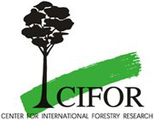In support of discussions on REDD+ at the Climate Change Conference in Lima, Peru, the Center for International Forestry Research (CIFOR) released a series of briefs on REDD+ safeguards.
The sixth in the series presents a case study from Indonesia to demonstrate a low-cost Safeguard Information System (SIS).
 December 2014: In support of discussions on REDD+ at the Climate Change Conference in Lima, Peru, the Center for International Forestry Research (CIFOR) released a series of briefs on REDD+ safeguards. The sixth in the series presents a case study from Indonesia to demonstrate a low-cost Safeguard Information System (SIS).
December 2014: In support of discussions on REDD+ at the Climate Change Conference in Lima, Peru, the Center for International Forestry Research (CIFOR) released a series of briefs on REDD+ safeguards. The sixth in the series presents a case study from Indonesia to demonstrate a low-cost Safeguard Information System (SIS).
The brief, titled ‘Designing Low-cost, Rigorous and Sustainable REDD+ Safeguard Information Systems,’ examines the SIS approach taken in Kalimantan, Indonesia, which made use of existing data, identified the most important safeguard issues and developed a theory of change model to map changes to existing drivers of deforestation based on expected REDD+ impacts. By employing village-level data already collected regularly by the Government of Indonesia and mapping expected changes using publicly available spatial data, the case study was able to implement a rough SIS that is expected to monitor some safeguards over time.
Based on the case study, the brief notes that some safeguards are relatively easy to integrate into a SIS because of existing monitoring efforts, while others present difficulties. In response, the brief calls for strengthened national data collection systems to ensure the availability of high quality and consistent data for SIS. CIFOR is part of the CGIAR Consortium. [Publication: Designing Low-cost, Rigorous and Sustainable REDD+ Safeguard Information Systems]